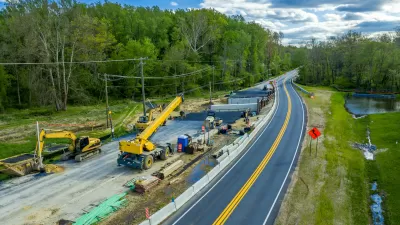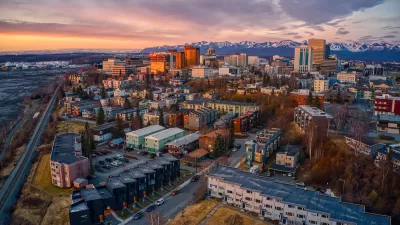Technology creates new challenges and opportunities, and this came home to me a couple of weeks ago when I was previewing a rough cut of Gridlock: Hell on Wheels, a video on traffic congestion released by Reason Foundation today. In the video, Comedian Drew Carey makes the following off-the-cuff comment on a morning drive-time radio show: “I would love to own a freeway in LA.”
Technology creates new challenges and opportunities, and this came home to me a couple of weeks ago when I was previewing a rough cut of Gridlock: Hell on Wheels, a video on traffic congestion released by Reason Foundation today. In the video, Comedian Drew Carey makes the following off-the-cuff comment on a morning drive-time radio show: "I would love to own a freeway in LA."
Why not? Gridlock earns its name on LA's freeway system where traffic counts rank among the densest in the nation. If there is anywhere someone could make money owning and managing a road system, LA is the place.
But this is a revolutionary paradigm, only made practical by rapid advances in technology and new applications of roadway management. Over the last 15 years, technology has advanced to the point where roads, particularly limited access highways, no longer need to be "public goods"-built and paid for by the public sector with "free" access to all users. The 91 Express Lanes in Southern California have helped show this principle along with dozens of HOT lane projects across the US.
Using variable rate pricing-increasing prices when roads are congested and lowing prices when they are underutilized-roads can be priced to cover their costs and, in the process, achieve more efficient and effective road services. The key will be to price roads so that they provide a benefit people will pay for-speed and reliability. Priced roads also have the benefit of dedicating excess capacity to mass transit, creating "virtual" exclusive busways. Transit and cars win.
Road pricing roads carries opportunities and challenges for planners. In addition to making transit more effective, travelers would have stronger incentives to look for alternatives to driving. Pedestrian friendly street designs, mixed use, telecommuting and even live-work arrangements would become relatively more attractive. Of course, some people might have an incentive to live even further out, but at least these choices would more closely reflect the true costs of providing the transportation services they use.
Of course, this means highways would no longer be free. So, there would not be a Drew Carey "freeway". There could be a Drew Carey highway, and perhaps that's progress.

Manufactured Crisis: Losing the Nation’s Largest Source of Unsubsidized Affordable Housing
Manufactured housing communities have long been an affordable housing option for millions of people living in the U.S., but that affordability is disappearing rapidly. How did we get here?

Americans May Be Stuck — But Why?
Americans are moving a lot less than they once did, and that is a problem. While Yoni Applebaum, in his highly-publicized article Stuck, gets the reasons badly wrong, it's still important to ask: why are we moving so much less than before?

Research Shows More Roads = More Driving
A national study shows, once again, that increasing road supply induces additional vehicle travel, particularly over the long run.

Judge Halts Enforcement of Anti-Homeless Laws in Grants Pass
The Oregon city will be barred from enforcing two ordinances that prosecute unhoused residents until it increases capacity and accessibility at designated camping sites.

Advancing Sustainability in Los Angeles County Schools
The Los Angeles County Office of Education’s Green Schools Symposium brings together educators, students, and experts to advance sustainability in schools through innovative design, climate resilience strategies, and collaborative learning.

Using Old Oil and Gas Wells for Green Energy Storage
Penn State researchers have found that repurposing abandoned oil and gas wells for geothermal-assisted compressed-air energy storage can boost efficiency, reduce environmental risks, and support clean energy and job transitions.
Urban Design for Planners 1: Software Tools
This six-course series explores essential urban design concepts using open source software and equips planners with the tools they need to participate fully in the urban design process.
Planning for Universal Design
Learn the tools for implementing Universal Design in planning regulations.
City of Moreno Valley
Institute for Housing and Urban Development Studies (IHS)
City of Grandview
Harvard GSD Executive Education
NYU Wagner Graduate School of Public Service
City of Cambridge, Maryland
Newport County Development Council: Connect Greater Newport






























